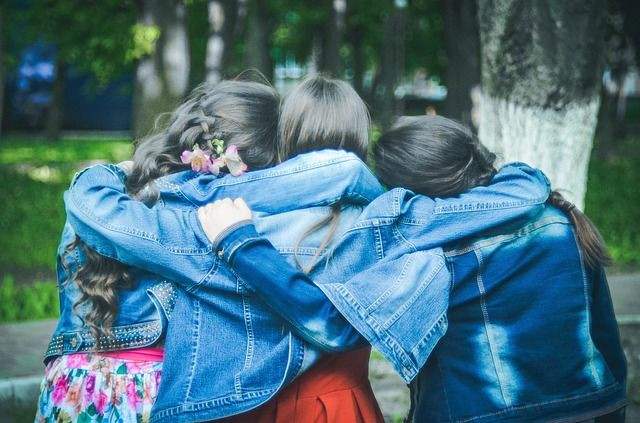No New Friends: Our Brains Only Have Capacity For 5 Best Friends And About 150 Social Relationships

How much is too much when it comes to friends? Well, according to Oxford University anthropologist Dr. Robin Dunbar, 150 seems to be the magic number when it comes to human relationships. Dunbar first began his investigation of human social relationships in the early 1990’s, but now, thanks to the help of modern technology and about 35 million unsuspecting volunteers, Dunbar has found evidence to further back his theory on social limits, proposing that although we may socialize with up to 150 individuals, only about five make it to the BBF spot.
When Dunbar first proposed his theory of human social groups he used the size of the human brain to predict that 150 was the maximum number of people humans could have in their social sphere, the MIT Technology Review reported. This theory held true in real life models of social spheres, but Dunbar also proposed that this group of 150 was split into different layers based on our emotional closeness to each individual. According to Dunbar’s theory of emotional closeness between individuals, although each individual has 150 contacts, this is spread out into “layers.” In the first layer we all have our five closest companions. The next layer has 10 close friends, followed by an extra 35 close acquaintances and finally 100 acquaintances. However, it was not until recently in a new study now published online in the Cornell University Library that Dunbar was able to find evidence to back this theory.
For the study, Dunbar and his fellow researchers, Padraig McCarraon and Kimmo Kaski gathered information from public records on six billion cell phone calls made by 35 people in an unnamed European country in 2007 to see who people were talking to and how often. According to the MIT Tech Review, the team screened out business and casual calls and only included individuals who called at least 100 other people. This narrowed down the data pool to around 27,000 people that on average called 130 other people, made 3,500 calls per year, or about 10 per day. The team then counted the number of calls that each individual made and used clustering algorithms to look for patterns within the results.
Results showed that the layers Dunbar had previously suggested did exist, although they were slightly smaller than he had originally hypothesized. Instead it seemed that most individuals on average had 4.1 close friends, 11.0 on the next level, 29.8 on the next level, and 128.9 on the outermost level of personal closeness.
What’s interesting is how the study showed that while extroverts may seem like they have more friends than introverts, at the end of the day both groups still have four “core” friends and the same amount of friendship levels.
The results are interesting and give a glimpse into the limits and patterns of human relationship. According to Dunbar, social circles are related to brain size and the bigger brain an organism has, the larger its social sphere. Still, there are constraints, and although our large brains allow us to have much larger social circles than other organisms, they don’t seem to be able to handle more than four-to-five close friends and 150 acquaintances in total. In a study released earlier this year, Dunbar showed that these constraints still existed in online relationships.
“Social media certainly helps to slow down the natural rate of decay in relationship quality that would set in once we cannot readily meet friends face-to-face,” Dunbar said in a statement. “But no amount of social media will prevent a friend eventually becoming 'just another acquaintance' if you don't meet face-to-face from time to time.
Source: MacCarron P, Kaski K, Dunbar RIM. Calling Dunbar’s Numbers. Cornell University Library. 2016



























